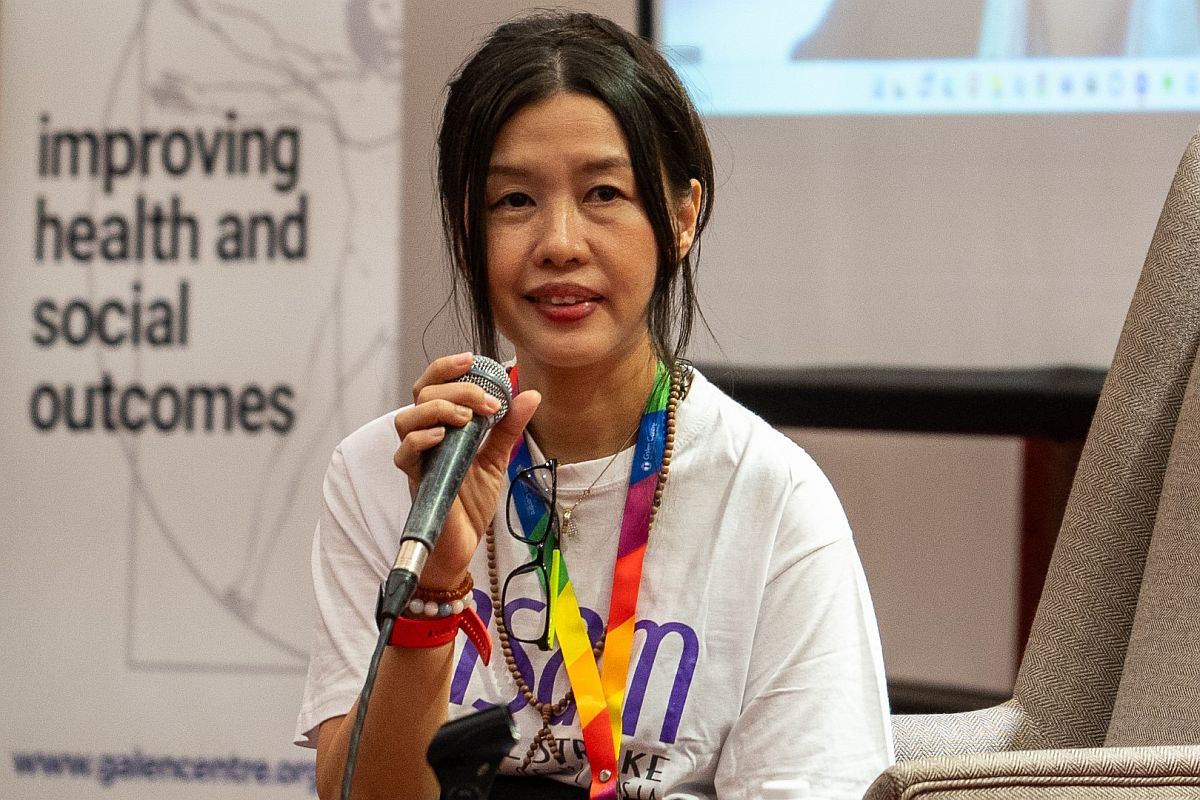PUTRAJAYA, Dec 8 – Ms Pang had her first stroke at age 40. Her experience was marked by a sudden severe headache and vomiting. She was promptly taken by her husband to KPJ Damansara Specialist Hospital, near where they lived, where stroke was diagnosed.
While she could still see and walk, she struggled to remember events during the stroke, or brain attack, and in the days following her stroke at the hospital.
Over the next few days, she underwent multiple scans, including an MRI. She was still able to walk the first two days but could not get out of bed on the third day. By Day Four, her left side was numb, and she needed a cane to walk, a condition known as “stroke-in-evolution”.
Her hospital stay lasted seven days, and the stroke care cost amounted to about RM30,000, which was covered by insurance. After her insurance coverage expired, she was referred to a public hospital, where she continues to receive free medication.
Just three months after the stroke episode, Ms Pang returned to her job as an account executive for a year, despite still needing assistance in the first two years post-stroke.
Now, nearly eight years later, Ms Pang is feeling “almost” okay and can manage driving and cooking, but there are still instances when she requires assistance. However, she has chosen to stop working and is now a homemaker.
“I wish everything could go back to how it was before,” Ms Pang said during the Galen Centre for Health and Social Policy’s roundtable discussion on “Managing the National Cost of Cardiorenal Metabolic Diseases: A Focus on Diabetes and Stroke” held last September 20, with support from Boehringer Ingelheim.
‘Near Normal’ Not Good Enough

Dr Law Wan Chung, a consultant neurologist at Sarawak General Hospital, characterised Ms Pang’s situation as a classic case of stroke patients in Malaysia. According to Dr Law, approximately 40 per cent of stroke patients in Malaysia are under 60 years of age, and nearly 60 per cent are below 65 years.
“In the case of Ms Pang, we consider her response to be quite positive because she has nearly returned to her normal state. While she has some remaining disabilities and has lost some function, she remains fully independent. In terms of our mRS (Modified Rankin Scale) evaluation, her score is 2.
“A score between zero and two is considered favourable for mRS patients. Did you know that only 30 per cent of our stroke patients achieve an mRS score of 0 to 2? Unfortunately, 10 per cent, or one out of every ten, will not survive their hospital stay due to the stroke, and the remaining six will experience permanent disability. These are the facts we are confronted with.”
The mRS is a scale used to assess the level of disability or dependency in stroke patients, ranging from complete recovery (score of 0) to severe disability (score of 5), and ultimately, death (score of 6). Additionally, it includes categories for situations where the patient cannot be reached or when the score cannot be determined based on medical records (scores 7 and 8, respectively).
Dr Law stressed that what might be considered a “good” recovery may still fall short for a stroke patient. He illustrated this by suggesting an example: “Imagine you’re right-handed, and we allow you to perform all daily activities except using your right hand or even just your fingers for a single day. We might consider this a very good recovery, but for that person, it can significantly impact their life.
“Even if it’s your non-dominant hand, you would realise there are many things you can’t do anymore – like buttoning your shirt or driving.
“And in Malaysia, if you can’t drive, while there’s Grab, it’s not always convenient. So, as a health care provider, I think it is important to give patients the choice (to get the best treatment and rehabilitation).”
Most Insurance Policies Cover Just 2 To 3 Months Of Rehabilitation
A senior physiotherapist from the National Stroke Association of Malaysia (NASAM), who identified himself as Ivan, shared that many stroke patients turn to NASAM for rehabilitation approximately two months after their stroke, which coincides with the depletion of their insurance coverage.
“Typically, insurance covers rehabilitation for about two to three months, and patients often seek assistance from NASAM when they can no longer afford private rehabilitation services.
“We have data indicating the timing of stroke survivors’ discharge from the hospital and their arrival at Nasam. The statistics reveal that at least 50 per cent of them approach us after the initial two months, which I believe corresponds to when their insurance coverage ends,” he told the conference.
“When they express their interest in our services, and we gather their data, we often discover that they had their stroke two months ago. When we inquired about their reasons for choosing Nasam, many cited the expiration of their insurance coverage.
“They then get referred to government facilities, but these often have long waiting times for appointments. That is when they inquire about the possibility of intensive rehabilitation at Nasam.”
First 6 To 12 Months ‘Golden Period’ For Stroke Recovery
Dr Looi Irene, head of neurology unit at Seberang Jaya Hospital, said that the cost for rehabilitation services can vary depending on service type.
For home therapy, which involves therapists visiting the patient’s home, the charges typically range from around RM100 per hour or even higher, such as RM150 in Penang.
“When going to a rehabilitation centre, additional costs may be incurred, including transportation for the patient and the potential need for family members to take leave from work.
“This is a crucial consideration because the first six months, or sometimes up to a year, are regarded as the golden period for neuroplasticity. During this time, patients have the highest potential for recovery,” Dr Looi said.
Beyond this initial period, when spasticity sets in, the effectiveness of physiotherapy may diminish.
Dr Looi said there is also the option of in-hospital rehabilitation centres like the Cheras Rehabilitation Hospital, Socso Rehabilitation Centre in Melaka, or the ReGen Rehab Hospital, where patients are admitted, and they receive intensive physiotherapy sessions throughout the day. “Again, all these are costs.”
“During the first few months, the expenses can amount to about RM100 to RM300 per day, so per week it is around RM1,500, and per month it can go to RM5,000 to RM10,000. This doesn’t account for additional costs such as hiring a maid or caregiver, which can add to an exorbitant amount,” Dr Looi said.
According to the Galen Centre for Health and Social Policy’s White Paper on stroke titled “Advancing and Optimising Acute Stroke Care in Malaysia”, as reported by CodeBlue(1), stroke management costs over RM213 million annually. This is based on an expected 40,000 stroke admissions per year.
The projected lifetime treatment expenses(2) for each ischemic and hemorrhagic stroke patient amount to RM36,400 (USD$8,607) and RM37,757 (USD$8,928), respectively.
From 2012 to 2019, stroke consistently ranked among the top five primary causes of hospitalisation in Malaysia. Stroke occurs when there is a blocked artery, leading to reduced blood flow and oxygen supply to the brain (ischemic stroke) or a burst blood vessel (hemorrhagic stroke).
The health think tank, citing a 2015 study(3) published in the Singapore Medical Journal on the cost of post-stroke outpatient care in Malaysia, highlighted that stroke patients and their families typically bear the majority of expenses related to disability, long-term care (including rehabilitation and nursing care), logistical considerations (such as mileage and parking), meals, and health aids and equipment following their hospital discharge for acute treatment.
References:
- “Malaysian Stroke Patients Bear Most Long-Term Care, Disability Costs: Galen” CodeBlue, 2 December 2022. Link. Accessed 23 October 2023.
- “Economic burden of stroke in malaysia: results from national neurology registry.” Journal of the Neurological Sciences, vol. 381, no. 462, October 15, 2017, pp. 167-168. Link.
- “Cost of post-stroke outpatient care in Malaysia.” Singapore Medical Journal, no. 56(2), February 2015, pp. 116-119. Link.








